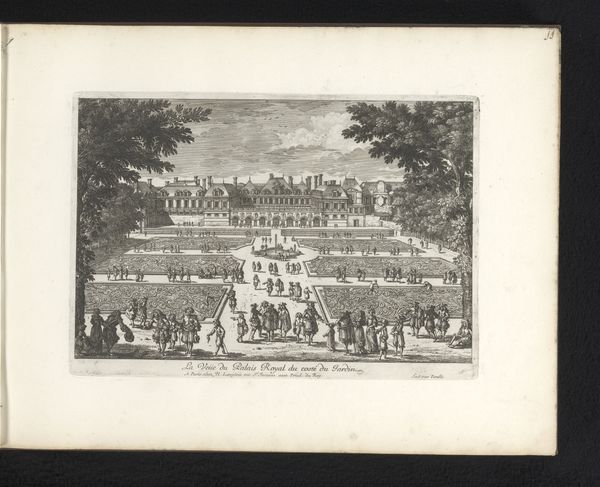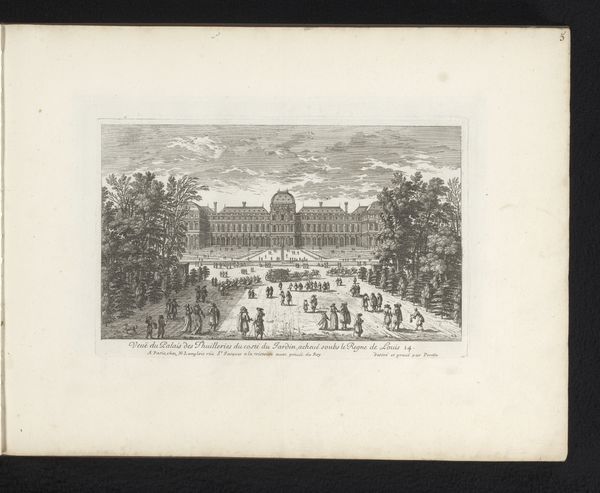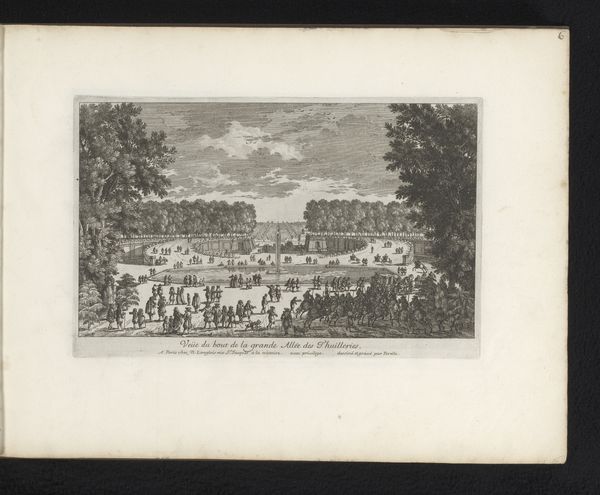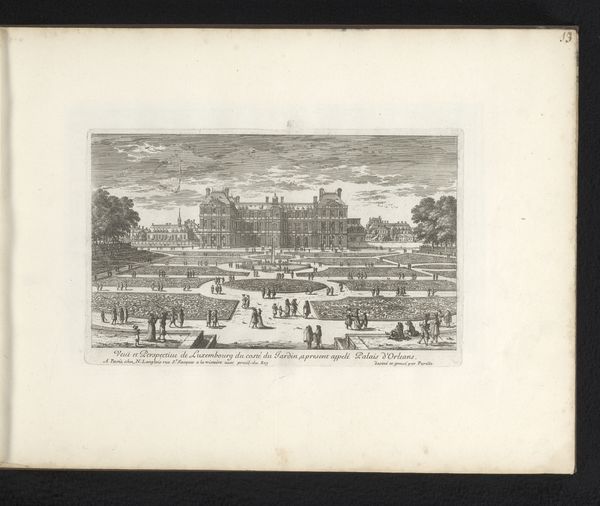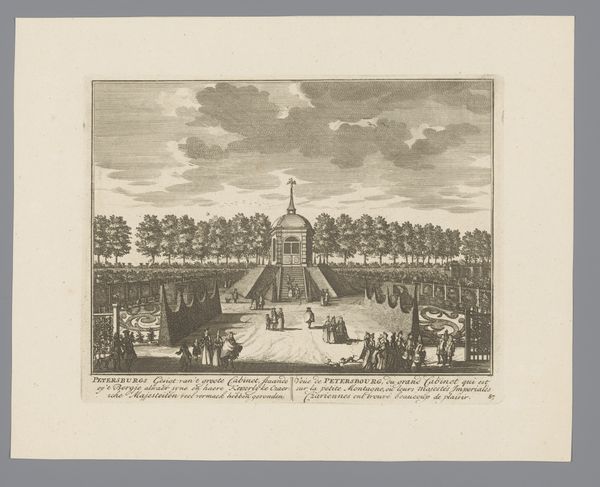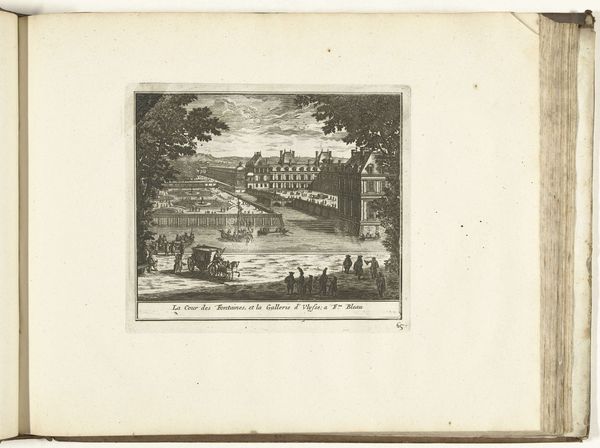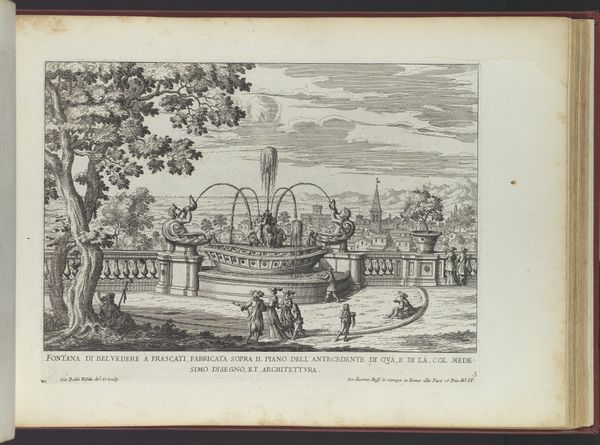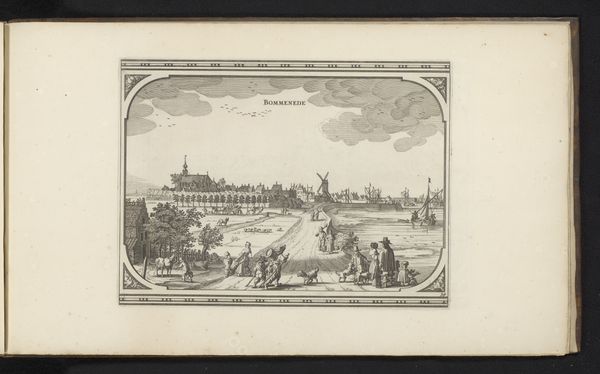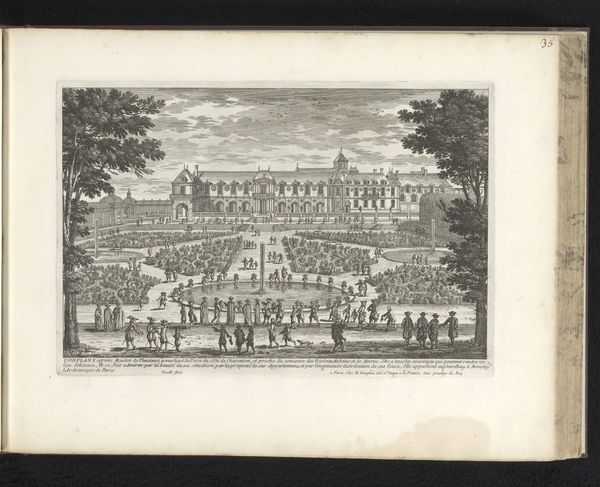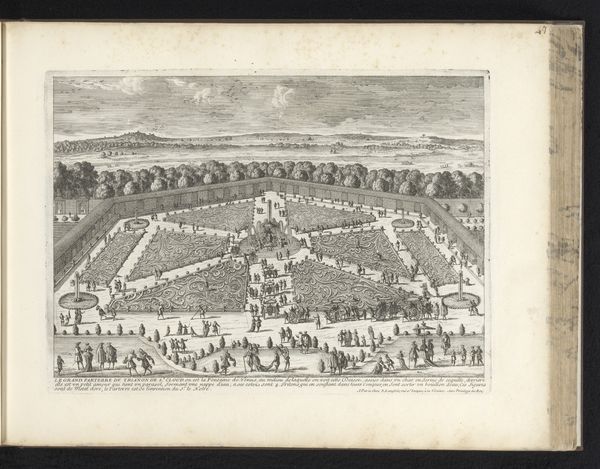
Autre Veüe de la Cour de Fontaines et la Galerie d'Ulisse à Fontaine-bleau 1680s
0:00
0:00
drawing, print, etching
#
drawing
#
boat
#
aged paper
#
toned paper
#
homemade paper
#
baroque
#
ink paper printed
# print
#
etching
#
human-figures
#
landscape
#
cityscape
Copyright: Public Domain
Curator: So, this is Adam Perelle’s "Autre Veüe de la Cour de Fontaines et de la Gallerie d'Ulisse à Fontaine-bleau," dating to the 1680s. What are your first impressions? Editor: It's a really detailed etching. I’m struck by the contrast between the grand architecture and the tiny figures milling about. It seems to romanticize court life. How should we read this depiction through a contemporary lens? Curator: Precisely. Consider the power dynamics at play. Whose story is being told here? This image idealizes the monarchy and reinforces its dominance. The “Gallery of Ulysses,” meant to celebrate royal power, stood on foundations built by exploiting human labor and extracting colonial wealth. How can we examine this work as evidence of cultural power at play? Editor: I see what you mean. The seemingly idyllic scene normalizes social stratification. So, beyond the formal garden and impressive architecture, there is another narrative about inequality and who has access to beauty and privilege. Curator: Absolutely. It’s crucial to ask ourselves: who is conspicuously absent from this image? And why? What can it tell us about how representations can erase or distort the lives of many for the comfort of a few? Think about the construction of this artwork, funded by profits from slavery and resource exploitation. Editor: That makes me rethink the whole piece. It is not just an image of leisure; it is a document of power, where the beauty is inextricably linked to exploitation and historical erasures. It creates the perfect visual marketing for monarchy. Curator: Exactly! By interrogating these seemingly benign images, we reveal their participation in complex social, economic and political processes. Always consider the power structures shaping artistic representations. Editor: I'll never see these historical prints the same way again.
Comments
No comments
Be the first to comment and join the conversation on the ultimate creative platform.

